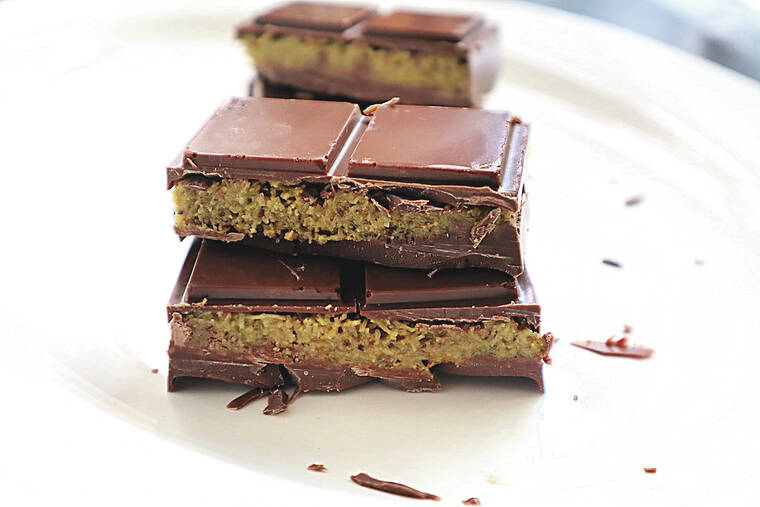After two years of COVID pandemic, wearing masks, and washing and sanitizing our hands, we have become so conditioned to avoid people who are coughing or look ill. I watch my two grandchildren think nothing of wearing masks and sanitizing their hands before entering a business and I wonder what the effect it has on their lives.
Children are better able to resist viruses than us older folks. After age 65, our immune functions begin to decline, making us more vulnerable to serious viral and bacterial infections. We have fewer immune cells but we can help fight sickness with exercise, eating a well-balanced diet, not smoking and not drinking too much alcohol.
Good gut bacteria also decreases the risk of getting sick from a respiratory infection and shortens the duration of the illness. Probiotic foods such as yogurt, kefir, kombucha, sauerkraut, natto, kimchee, and miso are good for assure your gut is healthy.
You can make sauerkraut in a Mason jar. It is easy and requires little equipment to get delicious, crunchy, nicely sour and good for you sauerkraut! When making sauerkraut, you are making it with a process called lacto fermentation. The beneficial bacteria on the surface of the cabbage, which is the same bacteria found in yogurt and converts sugars in the cabbage into lactic acid.
Homemade
Sauerkraut
Serves 8, makes 1 to 1-1/2 quarts
When fermenting, have a clean environment for the bacteria to grow. Wash the mason jar and make sure you remove any soap residue. Wash your hands well as you will be massaging the cabbage.
1 medium green cabbage, about 3 pounds
Cut cabbage into quarters and trim out the core. Slice each quarter down to 8 wedges. Slice each wedge crosswise into very thin ribbons:
Transfer the cabbage into a large bowl, sprinkle over the top with:
1-1/2 tablespoon kosher salt
Begin working the salt into the cabbage by massaging and squeezing the cabbage with your hands. At first it might not seem like enough salt, but gradually the cabbage will become watery and limp, about 5 to 10 minutes.
Add:
1 tablespoon caraway seeds
Place the cabbage into the mason jar, then tamp down the cabbage in the jar with your fist. Pour any liquid released by the cabbage into the jar.
Weigh the cabbage down with clean stones or marbles. This will help keep the cabbage submerged beneath its liquid.
Cover the jar with a cloth and secure it with a rubber band or twine. This allows air to flow in and out of the jar, but prevents dust or insects from getting into the jar.
Press the cabbage every few hours. Over the next 24 hours, press down on the cabbage every so often with a smaller jelly jar. As the cabbage releases its liquid, it will become more limp and compact and the liquid will rise over the top of the cabbage.
Ferment for 3 to 10 days, keeping it away from direct sunlight and at a cool room temperature, 65-75 degrees. Check it daily and press it down if the cabbage is floating above the liquid.
Start tasting after 3 days, when it tastes good to you, remove the weight, screw on the cap and refrigerate.
Foods rich in vitamin C such as strawberries, bell peppers, kiwi, broccoli, cabbage, citrus and potatoes help with our immunity, but high doses of supplements in excess will only be urinated out and wasted
A serving of cabbage has 8.4 milligrams of vitamin C, about one-third what the amount you need in a day.
• • •
Here’s a recipe for warm salad with bacon:
Warm
Cabbage Salad
with Bacon
Serves 6
3 slices bacon, chopped
3 tablespoons cider vinegar
2 teaspoons Dijon mustard
1 teaspoon whole-grain mustard
1/2 teaspoon honey
1/4 teaspoon salt
1/4 teaspoon ground pepper
2 tablespoons grapeseed or canola oil
2 medium carrots, sliced
1/2 medium red onion, chopped
4 cups chopped savoy cabbage or one half a head
Cook the bacon in a large skillet over medium-low heat, stirring until crisp, about 8 to 10 minutes.
Whisk vinegar, Dijon mustard, whole-grain mustard, honey, salt and pepper in a small bowl. Gradually whisk in the oil.
Transfer the bacon to a paper-towel lined plate with a slotted spoon, leaving the fat behind. Increase heat to medium-high and add carrots and onion, cook, stirring often, until starting to soften, about 3 to 4 minutes. Add the cabbage, cook, stirring until heated through, about 1 minute. Serve immediately, sprinkled with the bacon.
Foodie bites
Hawaii Community College’s Culinary Arts Program’s Cafeteria is open with extended hours from 10:30 a.m. until 1 p.m. and 9 a.m. until 1 p.m. for the short order menu. Call 934-2559 for orders and state your name, phone number and pick up time.
Last week they were open Tuesday, Wednesday and Thursday so you may want to call to double-check dates.
Email Audrey Wilson at audreywilson808@gmail.com.





